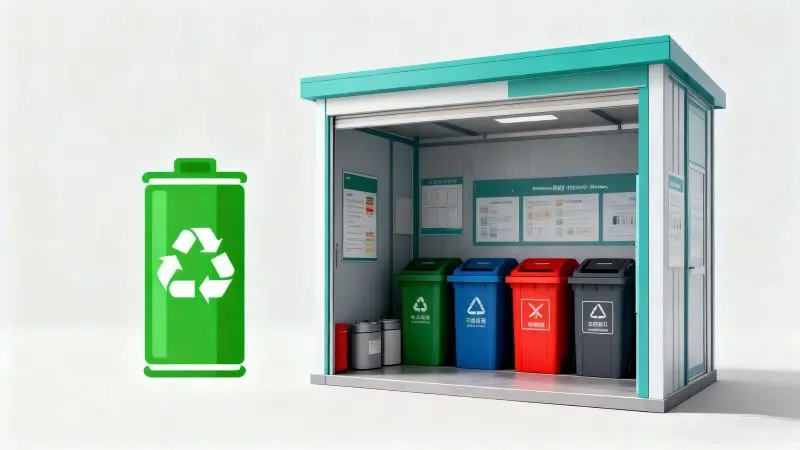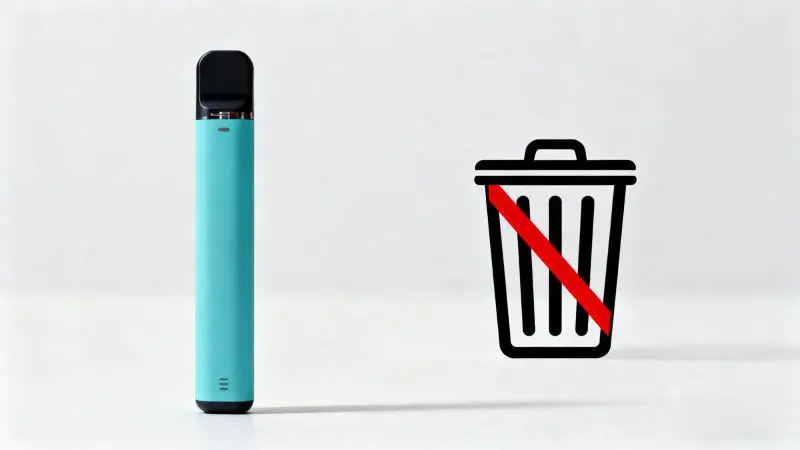Disposable vapes have become increasingly common, but many users do not realize that these devices must be disposed of carefully. According to guidance from the U.S. Environmental Protection Agency (EPA), disposable vapes contain lithium-ion batteries, nicotine residues, metals, and plastics—all of which require special handling to prevent fire hazards and environmental pollution.
This EPA-style guide explains how to dispose of disposable vapes properly, why they require specific handling, and where to take them for safe, responsible recycling.
Why Disposable Vapes Require Special Disposal
EPA highlights several reasons why disposable vapes should never be thrown in household trash:
They contain lithium-ion batteries
Damaged or crushed lithium batteries can spark, overheat, or ignite inside waste trucks or landfills.
They may contain hazardous waste
Residual nicotine or chemicals may leak and contaminate soil or water.
They qualify as electronic waste (e-waste)
Like phones or earbuds, disposable vapes contain multiple electronic components that must be handled through approved channels.
Are Disposable Vapes Recyclable?
Most curbside recycling programs do not accept disposable vapes due to mixed materials:
- plastic casing
- metal components
- cotton wick
- wiring
- Batterie
However, they can be recycled through:
- household hazardous waste (HHW) facilities
- battery recycling programs
- community e-waste events
- vape shop take-back programs
EPA encourages consumers to use these systems rather than attempting to dismantle the device themselves.

How to Properly Dispose of Disposable Vapes
Stop Using the Device Completely
Ensure the vape is no longer producing heat or vapor.
If it is swollen, leaking, or damaged, treat it like hazardous waste.
Do NOT Throw Disposable Vapes in Household Trash
The EPA clearly warns that electronic nicotine devices should never be placed in regular trash streams due to fire and contamination risks.
Take the Device to a Household Hazardous Waste (HHW) Facility
These facilities are equipped to handle:
- nicotine residues
- metal components
- lithium-ion batteries
Your local government website usually lists HHW drop-off locations and schedules.
Use Battery Recycling Programs
Lithium-ion batteries require specialized recycling.
EPA encourages consumers to use:
- Call2Recycle drop-off points
- hardware stores (Home Depot, Lowe’s, Best Buy)
- community battery bins
These programs ensure battery components are handled safely.
Use E-Waste Recycling Events
Many cities run periodic collection days for:
- small electronics
- batteries
- vape devices
- hazardous waste
These events follow EPA guidelines for safe disposal.
Ask Vape Shops or Retailers About Take-Back Programs
Some retailers provide:
- in-store vape collection boxes
- manufacturer recycling partnerships
- trade-in or return programs
This is often the most convenient option for consumers.
What NOT to Do When Disposing of Disposable Vapes
EPA warns against:
- ❌ Throwing vapes in trash bins
- ❌ Putting them in curbside recycling
- ❌ Crushing or puncturing the battery
- ❌ Burning or heating the device
- ❌ Attempting to disassemble the vape with sharp tools
- ❌ Pouring out liquid or residue
These steps can lead to chemical exposure or fire hazards.

Why Proper Disposal Matters
Correct vape disposal helps:
✔ Prevent fires
Lithium-ion batteries are responsible for numerous waste-collection fires.
✔ Reduce environmental pollution
Improper disposal can leak harmful chemicals into soil and water.
✔ Support responsible e-waste management
Separating batteries and electronics helps recycling facilities operate safely and sustainably.
Eco-Friendly Alternatives to Disposable Vapes
EPA encourages consumers to reduce waste by switching to:
- refillable pod systems
- rechargeable vape devices
- brands offering recycling programs
These options dramatically reduce battery and plastic waste.
Abschließende Überlegungen
Properly disposing of disposable vapes is essential for protecting public safety and the environment. By following EPA-informed best practices—using HHW facilities, battery drop-off points, and e-waste programs—you can ensure your device is handled responsibly and sustainably.
FAQ
Q1: Can disposable vapes go in household trash?
No. According to EPA guidance, disposable vapes should not be thrown in regular trash due to lithium-ion battery fire risks and potential environmental contamination.
Q2: Are disposable vapes considered e-waste?
Yes. Disposable vapes contain batteries, metals, circuitry, and plastics, which classify them as electronic waste requiring special disposal methods.
Q3: Where can I dispose of a disposable vape safely?
You should take disposable vapes to a household hazardous waste (HHW) facility, a battery recycling drop-off point, or a local e-waste collection event.
Q4: Do disposable vapes need to be disassembled before recycling?
No. EPA recommends consumers avoid disassembling the device themselves. Instead, bring the entire vape to a recycling or HHW center that can safely handle batteries.
Q5: What should I do if a vape is leaking, swollen, or damaged?
Treat it as hazardous waste. Place it in a non-flammable container (e.g., sand or kitty litter) and take it immediately to an HHW facility. Do not attempt to use or dismantle it.
Sie können mehr lesen
How to Open a Disposable Vape Safely (For Inspection & Recycling Only)
Vapes Explode? A Simple, Straightforward Guide for Everyday Users
How Long Do the Balls in a Ball Vape Last? A Real-World Lifespan Breakdown
